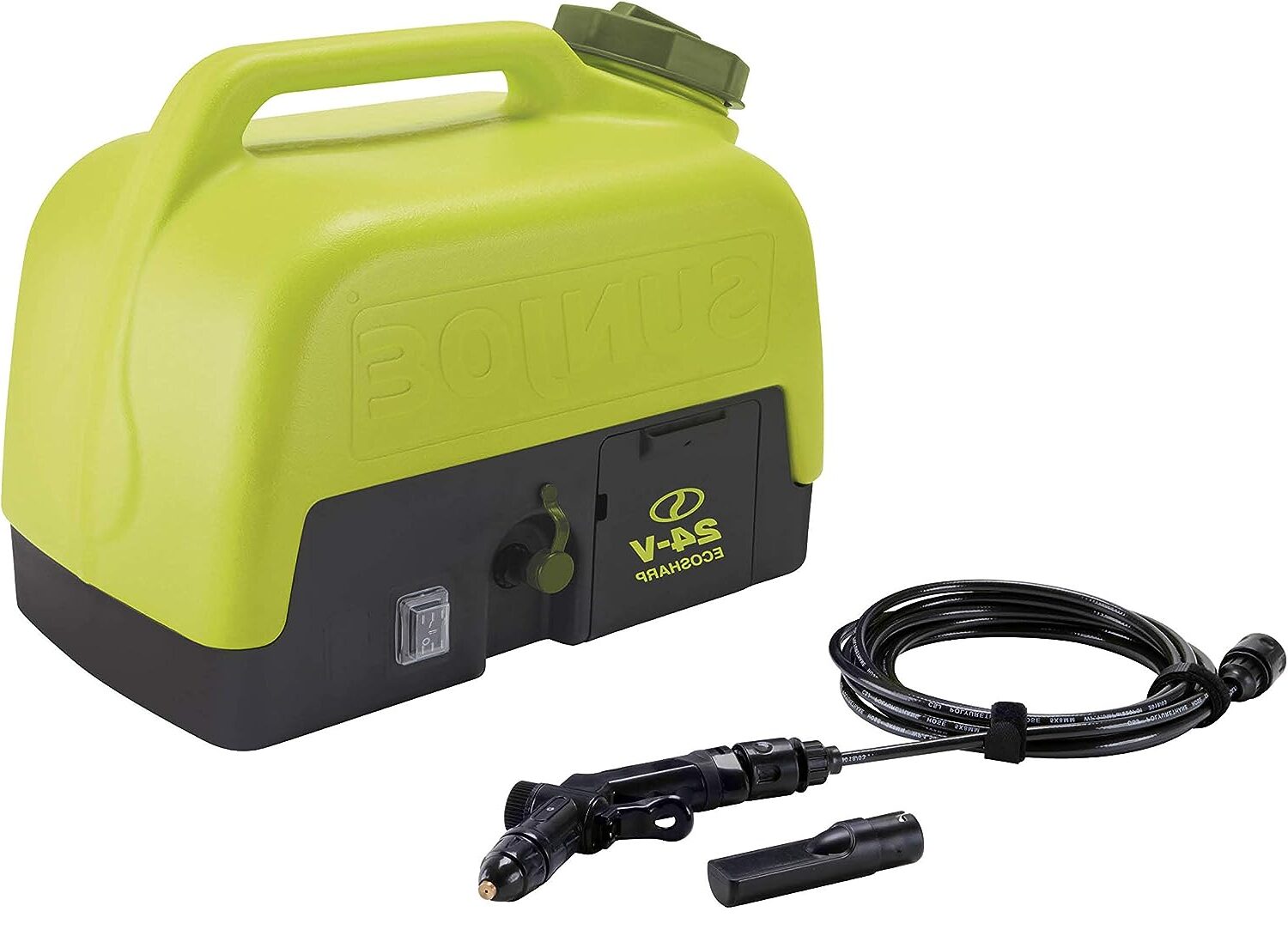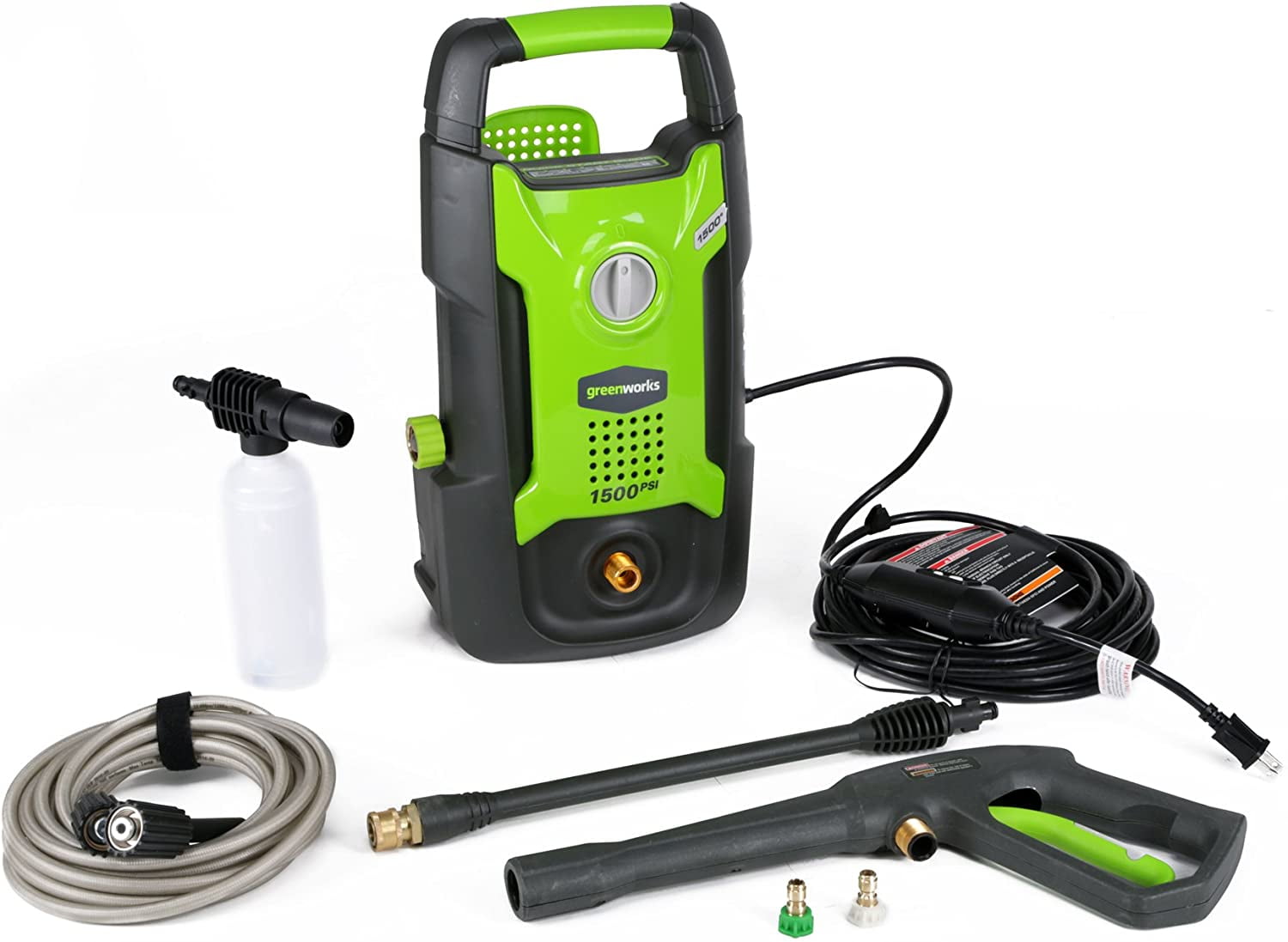Small Pressure Washers

Tired of scrubbing away grime and mildew in your bathroom? Small pressure washers offer a powerful solution for tackling even the toughest cleaning tasks. They are compact, portable, and easy to use, making them ideal for bathroom cleaning.
Benefits of Small Pressure Washers for Bathroom Cleaning
Small pressure washers provide several advantages over traditional cleaning methods, offering a more efficient and effective way to keep your bathroom sparkling clean.
- Deep Cleaning Power: Pressure washers deliver a concentrated stream of water, effectively removing dirt, grime, soap scum, and mold that traditional cleaning methods might miss.
- Time-Saving: The powerful jet stream quickly blasts away stubborn stains and debris, significantly reducing the time and effort required for cleaning.
- Environmentally Friendly: Pressure washers use less water and cleaning chemicals compared to traditional methods, making them a more eco-friendly option.
- Improved Hygiene: Pressure washers can effectively remove bacteria and allergens, creating a healthier and more hygienic bathroom environment.
Bathroom Cleaning Applications
Small pressure washers can handle a variety of cleaning tasks in your bathroom, making them a versatile cleaning tool.
- Tile and Grout Cleaning: The powerful jet stream effectively removes dirt, grime, and mildew from tile and grout, restoring their original shine.
- Showerhead Cleaning: Pressure washers can clear mineral deposits and debris from showerheads, restoring their water flow and preventing clogging.
- Fixture Cleaning: From faucets to shower doors, pressure washers can effectively remove soap scum, hard water stains, and other buildup from bathroom fixtures.
- Floor Cleaning: Pressure washers can be used to clean bathroom floors, removing dirt, grime, and even stubborn stains.
Types of Bathroom Surfaces
Small pressure washers are effective on a variety of bathroom surfaces, including:
- Tile: Pressure washers can effectively clean ceramic, porcelain, and stone tiles, removing dirt, grime, and mildew.
- Grout: The powerful jet stream can effectively remove dirt and grime from grout lines, restoring their original color.
- Showerheads: Pressure washers can clear mineral deposits and debris from showerheads, restoring their water flow and preventing clogging.
- Fixtures: Pressure washers can effectively clean faucets, shower doors, and other bathroom fixtures, removing soap scum, hard water stains, and other buildup.
Safety and Effectiveness Tips
While small pressure washers are powerful cleaning tools, it is important to use them safely and effectively in a bathroom setting.
- Use the Right Nozzle: Select a nozzle with a wide spray pattern for general cleaning and a narrow nozzle for targeted cleaning of grout lines and fixtures.
- Start with a Low Pressure Setting: Begin with a low pressure setting and gradually increase it as needed. Avoid using high pressure on delicate surfaces.
- Keep a Safe Distance: Maintain a safe distance between the pressure washer nozzle and the surface you are cleaning to prevent damage.
- Avoid Overspray: Direct the pressure washer nozzle away from walls and other surfaces that you don’t want to clean.
- Use a Cleaning Solution: For tough stains and buildup, consider using a cleaning solution specifically designed for pressure washing.
- Rinse Thoroughly: After cleaning, rinse the surface thoroughly with water to remove any cleaning solution residue.
Choosing the Right Small Pressure Washer for Your Bathroom

Deciding on the perfect small pressure washer for your bathroom can be a daunting task, with various options available. From the power of gas-powered models to the convenience of cordless designs, understanding the differences between these options will help you make the right choice.
Types of Small Pressure Washers
Different types of small pressure washers cater to specific needs. Here’s a breakdown:
- Electric Pressure Washers: These are the most common type for bathroom cleaning. They are lightweight, easy to use, and offer sufficient power for tackling most bathroom grime. Their affordability and quiet operation make them ideal for home use.
- Gas Pressure Washers: Gas-powered pressure washers deliver significantly more power than their electric counterparts, making them suitable for heavy-duty cleaning tasks. However, they are louder, heavier, and require fuel, making them less practical for frequent bathroom cleaning.
- Cordless Pressure Washers: Cordless models offer unparalleled convenience, allowing you to clean without being tethered to an outlet. They are perfect for quick cleaning tasks, but their battery life and power output may be limited.
Key Features to Consider
When choosing a small pressure washer for your bathroom, several key features should be considered:
- Pressure (PSI): Pressure, measured in pounds per square inch (PSI), determines the cleaning power of the pressure washer. For bathroom cleaning, a pressure range of 1,200 to 2,000 PSI is typically sufficient.
- Flow Rate (GPM): Flow rate, measured in gallons per minute (GPM), indicates the volume of water the pressure washer can deliver. A higher flow rate provides a faster cleaning experience. For bathroom cleaning, a flow rate of 1.2 to 1.5 GPM is generally adequate.
- Nozzle Types: Different nozzle types produce varying spray patterns, each suited for specific cleaning tasks. Common nozzle types include:
- 0-degree nozzle: Provides a concentrated, powerful jet ideal for removing stubborn dirt and grime.
- 15-degree nozzle: Offers a wider, more focused spray pattern suitable for general cleaning tasks.
- 25-degree nozzle: Produces a wider, gentler spray pattern ideal for delicate surfaces.
- 40-degree nozzle: Delivers a broad, gentle spray pattern perfect for rinsing and applying cleaning solutions.
Reputable Brands and Models
Several reputable brands offer small pressure washers specifically designed for bathroom cleaning. Some popular choices include:
- WAGNER: WAGNER’s electric pressure washers are known for their reliability and performance, offering a good balance of power and affordability. The WAGNER Spraytech 0032021 PowerShot Electric Pressure Washer is a popular model for bathroom cleaning.
- WORX: WORX offers a range of cordless and electric pressure washers, including the WORX WG629 20V Power Share Turbine Pressure Washer. Its cordless design makes it convenient for cleaning hard-to-reach areas in the bathroom.
- RYOBI: RYOBI’s pressure washers are known for their user-friendliness and durability. The RYOBI RY1418014 1800 PSI Electric Pressure Washer is a reliable option for bathroom cleaning.
Determining the Appropriate Pressure and Nozzle Type, Small pressure washer for bathroom
The appropriate pressure level and nozzle type depend on the specific cleaning task:
- Heavy-duty cleaning tasks, such as removing grout stains or cleaning showerheads: A higher pressure level (1,800 to 2,000 PSI) and a 0-degree nozzle are recommended.
- General cleaning tasks, such as cleaning the bathroom floor or walls: A moderate pressure level (1,400 to 1,600 PSI) and a 15-degree nozzle are suitable.
- Delicate cleaning tasks, such as cleaning glass or mirrors: A lower pressure level (1,200 to 1,400 PSI) and a 25-degree or 40-degree nozzle are recommended.
Using a Small Pressure Washer for Bathroom Cleaning

Transform your bathroom into a sparkling oasis with the power of a small pressure washer. These handy tools are perfect for tackling tough grime and stains, making your bathroom cleaning routine a breeze.
Preparing the Bathroom for Cleaning
Before you unleash the power of your pressure washer, it’s essential to prepare your bathroom for a deep clean.
- Clear the area: Remove any items from the bathroom floor, such as rugs, mats, and bath toys. This will give you a clear space to work and prevent any damage to these items.
- Protect delicate surfaces: Cover any delicate surfaces like wooden furniture, mirrors, and artwork with plastic sheeting or drop cloths. This will safeguard them from water splashes and potential damage.
- Seal electrical outlets: To prevent electrical hazards, cover any electrical outlets and switches with waterproof covers. This ensures safety while using the pressure washer near water.
Setting Up the Small Pressure Washer
Setting up your pressure washer is a straightforward process, but it’s important to do it right for optimal cleaning.
- Assemble the pressure washer: Follow the manufacturer’s instructions for assembling the pressure washer. This typically involves connecting the hose, wand, and nozzle.
- Connect to a water source: Attach the pressure washer to a garden hose and ensure it’s connected to a reliable water source. This could be a tap, a hose bib, or even a water bucket.
- Add cleaning solution: If using a cleaning solution, follow the manufacturer’s instructions for dilution and add it to the pressure washer’s detergent tank. Many pressure washers have a built-in detergent tank for easy cleaning.
- Test the pressure: Before you start cleaning, test the pressure washer in a safe area to ensure it’s working properly. Adjust the nozzle to the desired pressure level.
Cleaning Bathroom Surfaces with a Small Pressure Washer
With your pressure washer set up, you’re ready to tackle those stubborn stains and grime. Remember, using the right technique and cleaning solutions is key to achieving the best results.
- Start with the shower and tub: Begin by cleaning the shower and tub, focusing on areas with heavy soap scum, mildew, and mineral deposits. Use a specialized cleaning solution designed for these surfaces.
- Clean the toilet: Carefully clean the toilet bowl, exterior, and base. Use a dedicated toilet cleaner and avoid spraying the pressure washer directly at the toilet seat or tank.
- Wash the bathroom floor: Use a gentle cleaning solution and a wide-angle nozzle to clean the bathroom floor. Pay attention to grout lines and corners where dirt can accumulate.
- Clean the walls: If your bathroom walls are tiled, you can use the pressure washer to remove dirt and grime. However, be cautious with delicate wall finishes, as they may be susceptible to damage.
Using the Right Cleaning Solutions
Choosing the right cleaning solutions for your bathroom is crucial for effective cleaning and protecting your surfaces.
- Soap scum and mildew: For removing soap scum and mildew, use a specialized cleaner designed for these purposes. These cleaners often contain bleach or other powerful ingredients that can effectively eliminate these stubborn stains.
- Mineral deposits: For removing mineral deposits, use a cleaner specifically formulated for this purpose. These cleaners typically contain acids that break down mineral buildup.
- Grout cleaning: For cleaning grout, use a dedicated grout cleaner or a mixture of baking soda and water. This will help to remove dirt and stains from the grout lines.
- Avoid harsh chemicals: While strong chemicals can be effective, avoid using harsh chemicals on delicate surfaces like bathroom fixtures. These chemicals can damage the finish and lead to corrosion.
Safety Precautions for Using a Small Pressure Washer in the Bathroom
Using a pressure washer in the bathroom requires some safety precautions to avoid accidents and injuries.
- Wear protective gear: Always wear safety goggles and gloves when using a pressure washer. This will protect your eyes and hands from potential splashes and injuries.
- Avoid electrical hazards: Never use a pressure washer near electrical outlets or appliances. The water can cause electrical shock, so it’s important to keep the pressure washer away from these areas.
- Use caution with pressure: Start with a lower pressure setting and gradually increase it as needed. Be careful not to use excessive pressure, as it can damage bathroom surfaces.
- Never point the pressure washer at yourself or others: The high-pressure stream can cause serious injuries if directed at a person. Always keep the pressure washer pointed away from yourself and others.
Maintaining and Storing Your Small Pressure Washer
Proper maintenance and storage will extend the life of your pressure washer.
- Rinse the pressure washer: After each use, rinse the pressure washer with clean water to remove any cleaning solution or debris. This will help to prevent clogging and corrosion.
- Drain the detergent tank: If you used a cleaning solution, drain the detergent tank and rinse it thoroughly. This will prevent the solution from hardening and clogging the tank.
- Store the pressure washer properly: Store the pressure washer in a dry and cool place, out of direct sunlight. This will help to prevent damage from moisture and heat.
